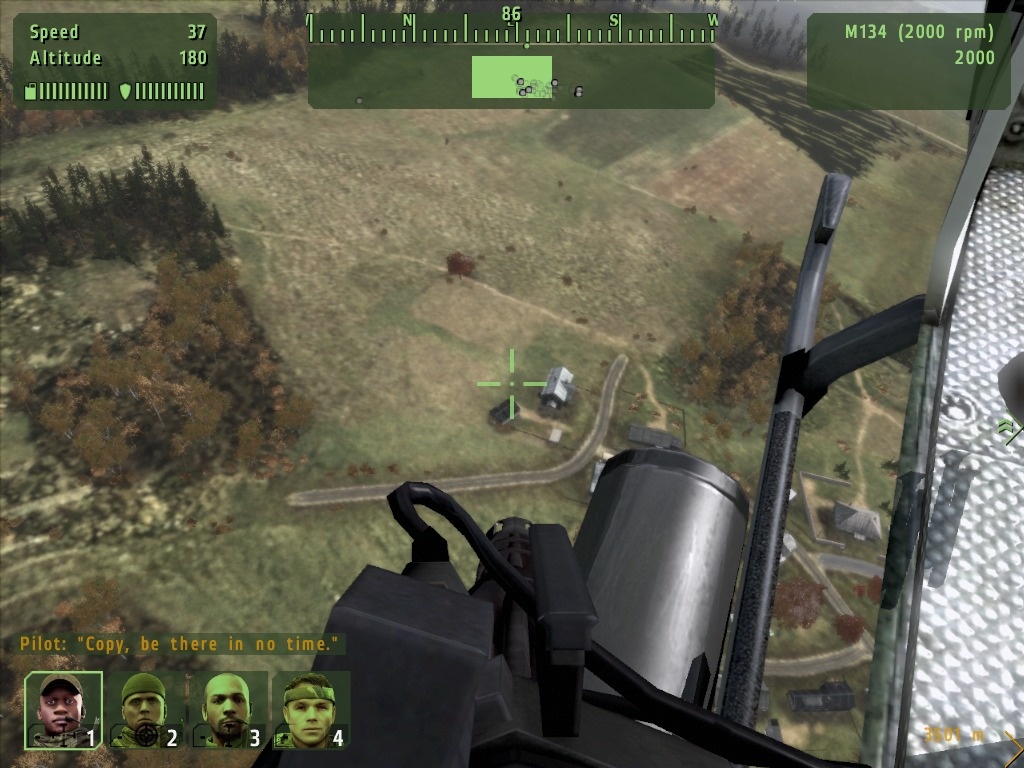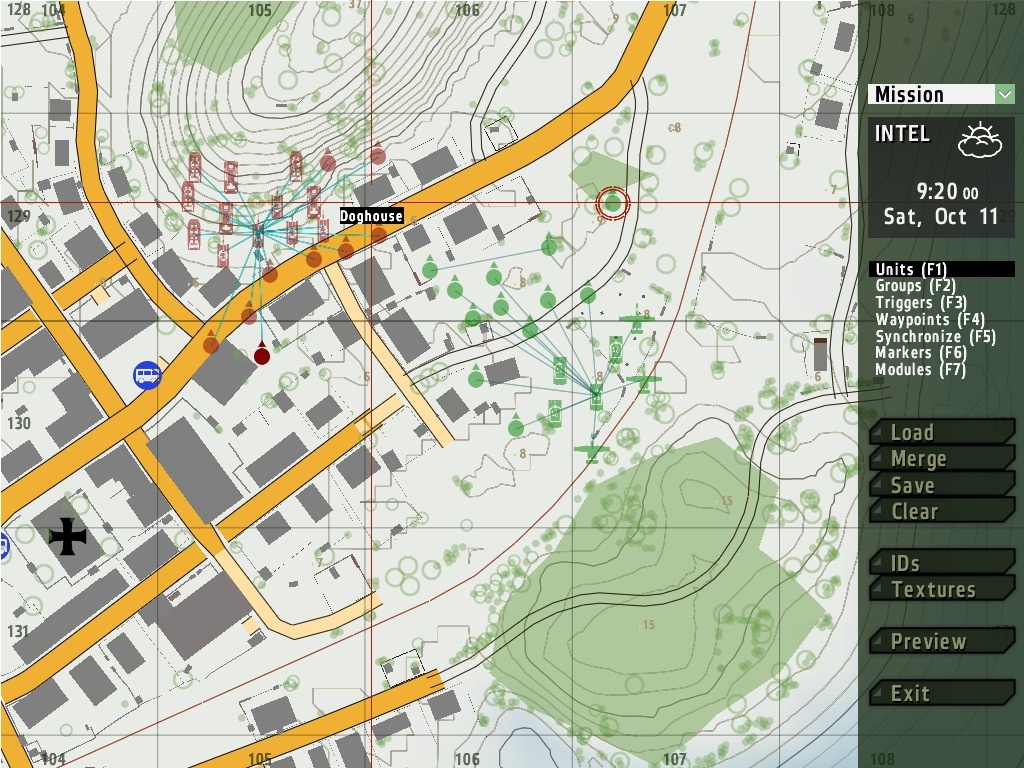Arma II is a first- and third-person tactical shooter that simulates a military operation in the midst of a growing civil war in the fictitious European country of Chernarus. The sequel to Armed Assault and the spiritual heir to Operation Flashpoint, Arma II sets a new standard for realistic military simulation games. While Bohemia Interactive's games have always been detailed and ambitious, its latest has surpassed its predecessors by adding meaningful interaction with non-player characters (other than shooting them), increasing the number of moral and strategic choices you will face throughout the campaign, and achieving unprecedented levels of detail, openness, beauty, and believability in the setting. Despite an infuriatingly buggy single-player campaign and some artificial intelligence driving issues, Arma II is a triumph. From its fascinating, sophisticated, and unscripted battles to the immersive detail of the gameworld, Arma II delivers a wholly unique and uncommonly replayable gaming experience.

Arma II’s setting is visually striking, amazingly detailed, and brimming with life. Modeled after regions of the Czech Republic, the landscape is so authentic that you could orienteer by watching the stars move across the sky. The terrain includes picturesque forests, mountains, beaches, and pastures, plus one large urban area and several smaller towns, and in many missions, you'll have free rein to traverse vast tracts of the 86-square-mile gameworld. Alongside the Chernarussian people, wild animals and livestock go about their respective lives. However, the animal AI is disappointingly indifferent to the war. Another element of the environment that can interrupt the immersion is the scarce number of civilians you'll encounter per town, along with how few buildings you can enter. On the whole, however, finding a well-worn trail in the forest or commandeering a farmer's tractor for the occasional joyride makes the world feel lived in and real.
Like the geography, the story is refreshingly complex and believable. In the former Soviet Republic of Chernarus, five factions vie for power, including the US Marines, your faction for the single-player campaign; the Chernarussian military, which is allied with the US; the Red Star Movement, a group of Communist separatists from the ethnically Russian areas of Chernarus; NAPA, an independent group of nationalist partisans fighting the Communists; and the armed forces of the Russian Federation. Although your mission is to help the legitimate government in its campaign to crush the Communist insurgency, it's not always clear which factions are in the right; they're all guilty of corruption and atrocities.
In contrast to many first-person shooter games, the war doesn't stop and start at your convenience. You'll find corpses, stumble upon unscripted battles, and encounter friendly troops on patrol, creating the impression that the fighting will continue with or without you. At the same time, your actions can have a profound influence on the story as the campaign unfolds. For example, at one point, you can become instrumental in forming an alliance between NAPA and the Chernarussian government, and at another, you can follow up on evidence of Communist war crimes to win the hearts and minds of the natives. Civilians can often provide intelligence about nearby enemy forces, rebel leaders, and their hideouts, but don't get too attached to your new friends, because enemy partisans don't take kindly to collaborators. In the campaign, each path you take develops fluidly into new missions, which typically begin with a simple objective, like scouting an area, and lead to additional optional objectives, based on your choices. Will you risk your squad and engage your target on foot, or will you endanger nearby civilians by calling in a missile strike? The ramifications of your actions will bear both on your immediate situation and on how the game unfolds several missions down the line. Other missions will send you deep into enemy territory to scout for insurgent bases, capture rebel leaders, rendezvous with partisans, and take part in a wide variety of other realistic military operations.

You start off as a grunt under the command of a squad leader, and you'll play the first third of the game as a straightforward infantry simulation. To survive, you must learn the importance of scanning the horizon before you move, flanking enemies, aiming with your weapon sights, and keeping a low profile. Combat is deadly serious in Arma II; a single gunshot to a critical area will kill you outright, while nonfatal wounds will leave you incapacitated and bleeding out until you receive medical attention. As a result, combat reaches a level of intensity rarely accomplished in action games, and every success is immensely gratifying, whether you are running for cover with bullets whizzing past your head, killing an enemy soldier from 200 meters away, or destroying your first tank with an RPG. You'll find that bullets are typically exchanged at a distance of 100 meters or more, at the far edge of visual contact. Aiming at this range is a ballistics puzzle that rewards intelligence over reflexes, and "spray and pray" tactics will only win you a trip home in an unvarnished pine box. Even though combat is extremely difficult, it's always fair. The average AI enemy, while a good shot, isn't inhumanly good and can be tricked or flanked. Unfortunately, the AI characters on all sides are atrocious drivers and have a knack for causing traffic jams, capsizing vehicles, and flattening allies. AI helicopter pilots, on the other hand, rarely crash, unless you ask them to land in the middle of a dense forest. However, they're an impatient bunch and tend to take off before your whole squad can get in the chopper.
Eventually you must take over command of your squad and learn to give orders. Because you have dozens of orders to choose from, controlling your squad is a daunting challenge at first, especially during hectic firefights. If you can remember the proper number keys and navigate their corresponding menus, you can order your troops to go prone, hold their fire, enter a vehicle, and scan the horizon, among many other useful commands. For their part, your soldiers generally follow your orders to the letter; however, they're also smart enough not to throw themselves under enemy tank treads, no matter how politely you ask. As your leadership skills develop and you are put in charge of additional squads, the map becomes an indispensable tool for coordinating your troops. You can easily give your men a detailed series of movement waypoints, see the approximate location of units spotted by your troops, and issue orders to address situations outside your field of vision. The map is also essential for ordering friendly pilots to transport the men to the landing zone of your choice. As the campaign progresses, the scope of your responsibility gradually increases until you're practically playing a real-time strategy game, building bases and leading scores of men into battle.

Arma II's single-player experience would be spectacular, if not for all the bugs, which are, sadly, too numerous to list. The biggest problem involves mission triggers. You'll often spend hours completing an objective, only to find that the game won't acknowledge your accomplishment, forcing you to revert to an earlier saved game and try again. If you try to keep playing after one of these incidents, other bugs can manifest. For example, all your squadmates can go AWOL, important non-player characters can lose the ability to speak, promised artillery support may never arrive, and a rebel leader can become indestructible. Triggers aren't the only bothersome issues. You and your squad are locked in place during cutscenes, and you may be unlucky enough to discover that enemies can roam around freely and massacre your helpless men as you watch in impotent horror. If you survive the cutscene, you may find that your troops have been fixed in place and cannot be moved until you shoot them. The result of all these malfunctions is that playing the campaign requires countless reloads. Naturally, loading takes forever.
Luckily, there is far more to Arma II than its single-player campaign. Other single-player options include several stand-alone missions, a robust editor, and Armory mode. In Armory mode you can play with various different characters, weapons, and vehicles, and complete challenges to unlock new ones. Challenges range from grabbing a G-36 and defending a hill, to hunting and skeet shooting as a rifleman, to avoiding poachers as a goat. The stand-alone missions let you play with some of the other factions and are not plagued by bugs like the campaign, while the easy-to-use in-game editor allows you to quickly whip up a fantasy battle using any of the game's units. Jump into the fray, or spawn yourself as a bystander to sit back and watch the explosions. With a little more time invested, you can create complex scripted scenarios to play solo or with your friends. The editor is also great for playing with any piece of weaponry in the game, without first completing challenges in the armory.
Multiplayer games range from conventional fare like Deathmatch and Capture the Flag to bizarre original scenarios created by the host. Of the standard multiplayer game types, the most interesting is Capture the Island, also known as Warfare. Two teams face off to seize control of an island. Each team has a commander who builds the base and can give orders to the other players, each of whom commands his or her own AI squad. Teams earn money by capturing territory, killing enemies, and salvaging wreckage, which they can spend to purchase base buildings, units, and equipment. These conflicts escalate to wonderfully epic proportions once both sides are fielding an impressive force of tanks, APCs, and helicopters. As for user-made missions, they're quick and easy to download at the start of an MP game, although they're not guaranteed to be any good. Regardless, clans will love creating their own recruiting and practice missions, and casual players (as much as anyone who plays Arma II can be called "casual") will enjoy the variety that unique MP missions bring to the game.

While Arma II has improved on its predecessors in almost every way, one annoyance that still persists is the unscripted dialogue, which sounds like having a phone conversation with a machine or listening to an awful Shatner impression. "Oh no...," a unit will start, "One...is down." Sure, the information is often vitally important, such as, "Enemy...tank...just...in front of...us," but the delivery leaves a lot to be desired. What's worse is that your American character's voice acting isn't consistent, the most glaring example being that he starts moaning about his broken leg in a decidedly Eastern European accent. The most annoying sounds of all are the extremely loud, unsynchronized, overlapping Russian radio broadcasts you'll hear near the Russian border, which produce an unbearable cacophony of gibberish. In contrast, the sound effects are solid, and the infrequent musical interludes fit the mood.
Arma II is chock-full of experiences and features you won't find in any other game. Where else can you fight in vast unscripted battles, hop through the pasture as a rabbit, or level a small town with a T-72? Despite its faults, Arma II is an incredibly versatile and entertaining military simulation. While the bugs are disappointing, they are overshadowed by everything Arma II does right. In the end, even the AI's bad driving can be forgiven; although you'll be miffed when a squadmate accidently runs you over with an APC, the gratitude and camaraderie you feel every time he pulls you out of the line of fire to administer first aid ultimately leave a stronger impression.